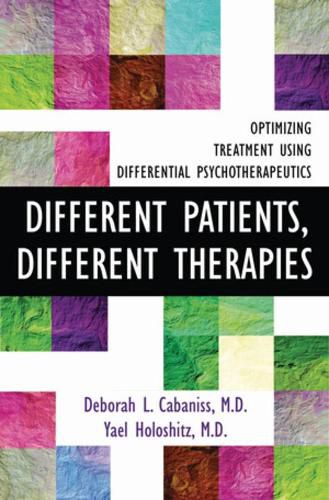Readings Newsletter
Become a Readings Member to make your shopping experience even easier.
Sign in or sign up for free!
You’re not far away from qualifying for FREE standard shipping within Australia
You’ve qualified for FREE standard shipping within Australia
The cart is loading…






Different Patients, Different Therapies is a guide to choosing among the many psychotherapeutic options available to patients and therapists today. Offering a systematic approach, Deborah L. Cabaniss and Yael Holoshitz outline more than twenty different types of therapy, including psychodynamic psychotherapy, CBT, DBT, MI, and ACT. At the heart of the book are vignettes of typical clinical situations, accompanied by commentary about treatment choice from more than thirty psychotherapy experts.
Written in accessible, jargon- free language, this book is as suitable for an introductory class on psychotherapy for any mental- health training program as it is for a seasoned therapist or someone considering psychotherapeutic treatment. Chapters include exercises to help readers think through new ways of helping patients to optimize treatment decisions.
$9.00 standard shipping within Australia
FREE standard shipping within Australia for orders over $100.00
Express & International shipping calculated at checkout
Different Patients, Different Therapies is a guide to choosing among the many psychotherapeutic options available to patients and therapists today. Offering a systematic approach, Deborah L. Cabaniss and Yael Holoshitz outline more than twenty different types of therapy, including psychodynamic psychotherapy, CBT, DBT, MI, and ACT. At the heart of the book are vignettes of typical clinical situations, accompanied by commentary about treatment choice from more than thirty psychotherapy experts.
Written in accessible, jargon- free language, this book is as suitable for an introductory class on psychotherapy for any mental- health training program as it is for a seasoned therapist or someone considering psychotherapeutic treatment. Chapters include exercises to help readers think through new ways of helping patients to optimize treatment decisions.